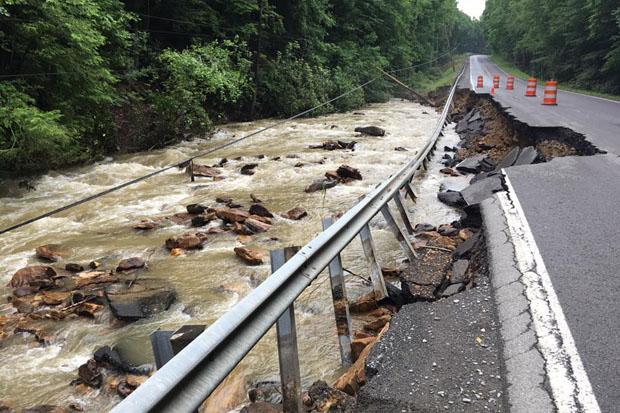Transportation
Our nation's economy depends on robust transportation systems—over land, water, and air—and supply chains to move raw materials and goods across the country and around the world. Similarly, urban communities depend on interconnected transportation systems to facilitate distribution of food, energy, and other goods among homes and businesses, and to move people to their jobs and other activities as efficiently as possible.
The impacts of climate change present a significant and growing risk to the safety, reliability, and sustainability of transportation infrastructure and operations. As disruptions in any part of the transportation system can trigger cascading delays and economic impacts across multiple systems, building resilience in the transportation sector can help cities recover from a range of events.
Vulnerable assets
Roads, bridges, tunnels, rails, airports, and other transportation facilities, in inland locations as well as in coastal communities, can be vulnerable to climate-related events. For example, storm-related flooding—exacerbated by rising sea levels in coastal cities—can close tunnels, subway stations, low-lying roads, and marine cargo facilities, either temporarily or permanently. Flooding from increasingly frequent heavy downpours can disrupt traffic, damage culverts, and reduce the service life of stormwater infrastructure. High temperatures can accelerate the deterioration of pavement on roads and runways, and cause failures of railroad and subway tracks.
New conditions
While existing transportation infrastructure was designed to handle a broad range of conditions based on historic climate, the frequency and intensity of some extreme weather events is increasing. Transportation planners are likely to face difficult choices about how and where to invest resources to bolster or replace existing infrastructure. Strategies that transportation departments might use in adapting to climate change include:
- Integrate climate change considerations into asset management.
- Strengthen or abandon infrastructure that is vulnerable to flooding.
- Raise standards for the resilience of new infrastructure.
- Add redundant infrastructure to increase system resiliency.
- Promote zoning, insurance, and disaster recovery policies that discourage development in vulnerable areas.
Planning for the future
As transportation infrastructure is usually intended to last 50 years or longer, today’s transportation planners may be able to save time, money, and traffic-induced headaches in the long run by anticipating and planning for future conditions. Unless decision makers address the resilience of transportation infrastructure and operations in a changing climate, new conditions are likely to mean higher costs, greater disruption, and more damage to transportation infrastructure in urban communities.
The preceding text was exerpted and abridged from U.S. Department of Transportation's draft framework report Beyond Traffic: Trends and Choices 2045.

